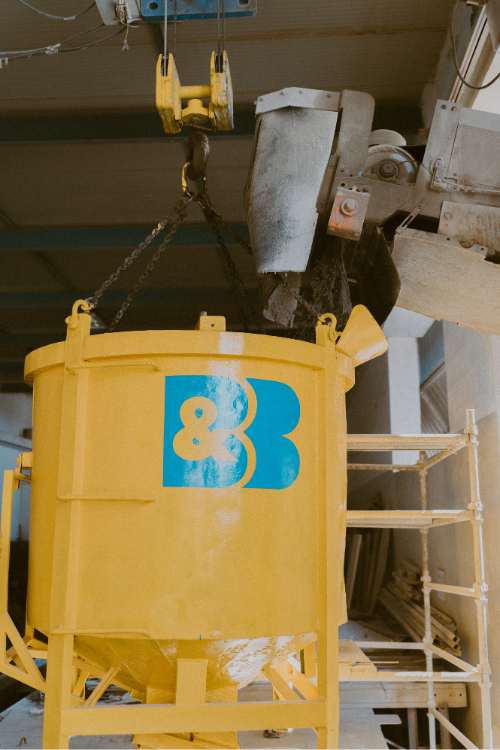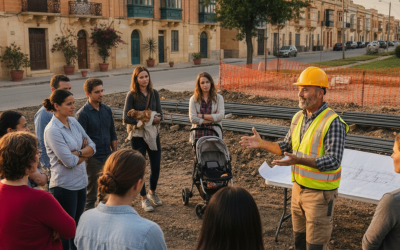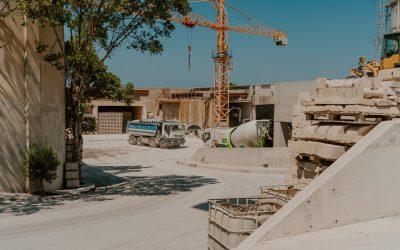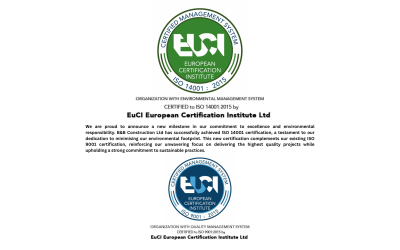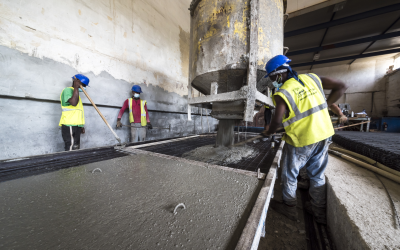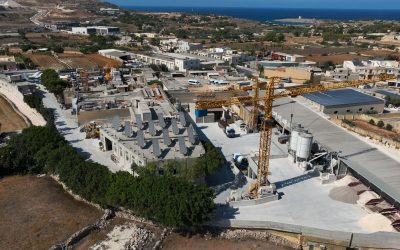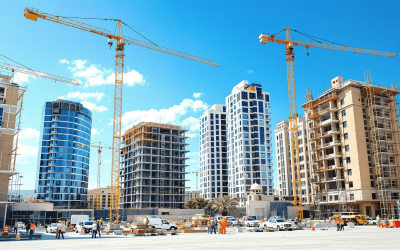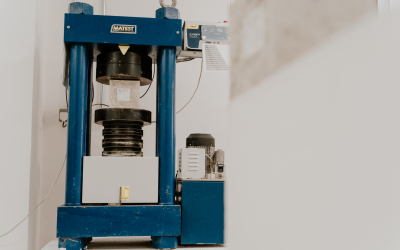Building a Greener Future for Generations to Come
Sustainable Construction
As society becomes increasingly aware of the need for sustainability and environmental consciousness, the construction industry must adapt to meet these new challenges. In the quest to build a greener future for generations to come, sustainable construction practices have emerged as a crucial solution. By incorporating eco-friendly materials, reducing waste, and optimizing energy efficiency, sustainable construction aims to minimize environmental impact while creating comfortable and functional spaces. This article explores the key principles of sustainable construction and delves into the benefits it offers.
With an emphasis on creating a healthier and more environmentally friendly built environment, sustainable construction aligns with the values of conscientious individuals and organizations. It not only addresses pressing environmental concerns but also brings economic advantages. From lower operational costs to increased market demand for green buildings, implementing sustainable construction practices can streamline operations and boost competitiveness.
Join us as we delve into the world of sustainable construction and discover how it can pave the way for a brighter future, one where both the planet and future generations can thrive.
Benefits of Sustainable Construction
Sustainable construction offers a multitude of benefits that extend beyond the immediate environmental impact. By embracing eco-friendly practices, construction companies can unlock a wealth of advantages that positively impact various stakeholders, from the environment to the end-users of the built spaces.
One of the primary benefits of sustainable construction is its ability to reduce the carbon footprint of the industry. The construction sector is a significant contributor to global greenhouse gas emissions, and by adopting sustainable methods, companies can significantly reduce their carbon footprint and contribute to the fight against climate change. This not only benefits the environment but also aligns with the growing demand for environmentally conscious practices among consumers and policymakers.
Another key advantage of sustainable construction is the potential for cost savings. While the initial investment in sustainable materials and technologies may be higher, the long-term operational and maintenance costs are often significantly lower. Energy-efficient buildings, for instance, can save on utility bills, and the use of durable, eco-friendly materials can reduce the need for costly repairs and replacements. This financial benefit can make sustainable construction a more attractive option for developers, investors, and building owners alike.
Sustainable construction also has the potential to enhance the health and well-being of building occupants. By incorporating design elements that promote indoor air quality, natural lighting, and thermal comfort, sustainable buildings can create healthier and more comfortable living and working environments. This can lead to improved productivity, reduced absenteeism, and a better overall quality of life for the building’s users.
Moreover, the adoption of sustainable construction practices can contribute to the creation of new job opportunities and the growth of the green economy. As the demand for sustainable building solutions increases, so too does the need for specialized skills and expertise in areas such as renewable energy, energy-efficient building systems, and sustainable material sourcing. This presents a significant opportunity for the construction industry to drive innovation and create new avenues for economic development.
Key Principles of Sustainable Construction
At the heart of sustainable construction lies a set of guiding principles that aim to minimize the environmental impact of the built environment. These principles serve as the foundation for the development and implementation of sustainable construction practices, ensuring that every stage of the building process is carefully considered and optimized for sustainability.
One of the fundamental principles of sustainable construction is the use of environmentally friendly materials. This involves the selection of materials that are renewable, recyclable, or biodegradable, reducing the reliance on non-renewable resources and minimizing the environmental footprint of the construction process. Sustainable materials may include bamboo, recycled steel, and low-emission concrete, among others.
Another key principle is the optimization of energy efficiency. Sustainable construction prioritizes the design and implementation of buildings that minimize energy consumption throughout their lifecycle, from the construction phase to the operational phase. This can be achieved through strategies such as the incorporation of passive solar design, the use of energy-efficient appliances and lighting, and the integration of renewable energy sources like solar panels or wind turbines.
Waste management and recycling are also integral components of sustainable construction. By implementing effective waste reduction and recycling strategies, construction companies can divert a significant portion of their waste from landfills, reducing the environmental impact and promoting the circular economy. This includes the repurposing of construction materials, the proper disposal of hazardous waste, and the implementation of on-site waste sorting and recycling programs.
Water conservation is another crucial principle of sustainable construction. Sustainable buildings are designed to minimize water usage and promote the efficient management of water resources. This can be achieved through the installation of low-flow plumbing fixtures, the implementation of greywater recycling systems, and the incorporation of drought-resistant landscaping.
Finally, sustainable construction emphasizes the importance of considering the entire lifecycle of a building, from the initial design and construction to the ongoing operation and eventual decommissioning. This holistic approach ensures that sustainability is integrated throughout the entire process, maximizing the environmental, economic, and social benefits of the built environment.
Water conservation in construction
Water conservation is a critical component of sustainable construction, as the construction industry is a significant consumer of water resources. From the production of building materials to the construction process itself, water usage is a crucial factor that must be addressed to minimize the environmental impact of the built environment.
One of the primary ways in which sustainable construction addresses water conservation is through the use of water-efficient technologies and strategies. This includes the installation of low-flow plumbing fixtures, such as faucets, showerheads, and toilets, which can significantly reduce the amount of water consumed by building occupants. Additionally, the incorporation of greywater recycling systems allows for the reuse of non-potable water for applications such as landscape irrigation and toilet flushing, further reducing the overall water demand.
Sustainable construction also emphasizes the importance of water-efficient landscaping. By selecting drought-resistant and native plant species, construction projects can minimize the need for irrigation and reduce the reliance on potable water for outdoor maintenance. The incorporation of rainwater harvesting systems, which collect and store precipitation for later use, can also contribute to the conservation of water resources.
During the construction process itself, sustainable construction practices focus on minimizing water waste and promoting efficient water management. This may involve the implementation of water-efficient construction equipment, the implementation of water-saving practices on-site, and the proper disposal of wastewater generated during construction activities. By adopting these strategies, construction companies can reduce their overall water footprint and contribute to the preservation of scarce water resources.
Moreover, sustainable construction emphasizes the importance of water quality and the protection of local water ecosystems. This includes the implementation of stormwater management systems, which help to prevent the contamination of nearby water bodies, and the use of eco-friendly construction materials that do not release harmful chemicals or pollutants into the surrounding environment.
By prioritizing water conservation in sustainable construction, the industry can play a crucial role in addressing the global water crisis and ensuring the long-term sustainability of the built environment. As the demand for water continues to grow, the adoption of water-efficient practices in construction will become increasingly vital in safeguarding this precious resource for generations to come.
Waste management and recycling
Sustainable construction places a strong emphasis on effective waste management and recycling practices, recognizing the significant environmental impact of construction-related waste. The construction industry is responsible for a substantial portion of global waste generation, and by implementing sustainable waste management strategies, construction companies can significantly reduce their environmental footprint.
One of the key principles of sustainable waste management in construction is the reduction of waste at the source. This involves careful planning and design to minimize the generation of waste throughout the construction process, from the selection of materials to the optimization of construction techniques. By adopting a “reduce, reuse, recycle” approach, construction companies can minimize the amount of waste sent to landfills or incineration facilities.
Sustainable construction also prioritizes the reuse and repurposing of construction materials. This can be achieved through the salvage and reclamation of building components, such as doors, windows, and fixtures, as well as the incorporation of recycled materials into new construction projects. This not only reduces waste but also conserves natural resources and minimizes the environmental impact associated with the extraction and processing of raw materials.
In addition to material reuse, sustainable construction emphasizes the importance of recycling. Construction companies can implement comprehensive recycling programs that target a wide range of waste streams, including concrete, metals, plastics, and wood. By diverting these materials from landfills and directing them towards recycling facilities, construction projects can significantly reduce their overall waste footprint.
Sustainable construction also recognizes the need for proper disposal of hazardous materials, such as asbestos, lead-based paint, and chemical solvents. These materials require specialized handling and disposal methods to prevent environmental contamination and protect the health and safety of workers and the surrounding community. Sustainable construction practices ensure that these materials are managed in accordance with relevant regulations and best practices.
Furthermore, sustainable construction promotes the use of prefabricated and modular building components, which can reduce construction waste by minimizing the amount of on-site cutting and trimming required. This approach also allows for the efficient reuse and repurposing of leftover materials, further contributing to the circular economy.
By embracing sustainable waste management and recycling practices, the construction industry can significantly reduce its environmental impact, conserve natural resources, and contribute to the development of a more sustainable built environment. As the demand for green building solutions continues to grow, the adoption of these practices will become increasingly critical in shaping the future of the construction industry.
Energy-efficient design and technology
Energy efficiency is a fundamental pillar of sustainable construction, as the built environment is a significant consumer of energy resources. Sustainable construction practices prioritize the design and implementation of buildings that minimize energy consumption throughout their lifecycle, from the construction phase to the operational phase.
One of the key strategies in energy-efficient sustainable construction is the incorporation of passive solar design principles. This involves the strategic placement and orientation of buildings to maximize the use of natural sunlight and minimize the need for artificial heating and cooling. By leveraging the sun’s energy, construction projects can reduce their reliance on fossil fuels and lower their overall energy consumption.
In addition to passive solar design, sustainable construction also emphasizes the use of energy-efficient building materials and technologies. This includes the selection of insulation materials with high thermal performance, the installation of energy-efficient windows and doors, and the integration of smart building automation systems that optimize energy usage based on occupancy patterns and environmental conditions.
The incorporation of renewable energy sources, such as solar photovoltaic systems and wind turbines, is another key aspect of energy-efficient sustainable construction. By generating on-site renewable energy, construction projects can reduce their reliance on grid-supplied electricity, which is often generated from non-renewable sources. This not only lowers the carbon footprint of the building but also provides a reliable and cost-effective source of energy.
Sustainable construction also focuses on the optimization of building systems, such as heating, ventilation, and air conditioning (HVAC) systems, to ensure their energy efficiency. This may involve the use of high-performance equipment, the implementation of zoning and controls to match energy usage with occupancy patterns, and the integration of heat recovery systems to capture and reuse waste heat.
Furthermore, sustainable construction emphasizes the importance of energy-efficient lighting, which can significantly reduce the energy consumption of a building. This includes the use of LED lighting fixtures, the incorporation of natural daylighting strategies, and the implementation of intelligent lighting controls that adjust illumination levels based on occupancy and natural light availability.
By embracing energy-efficient design and technology, sustainable construction projects can achieve significant reductions in energy consumption and greenhouse gas emissions, contributing to the broader goal of mitigating climate change. As the demand for sustainable building solutions continues to grow, the construction industry must adapt and adopt these innovative energy-saving strategies to create a more sustainable and resilient built environment.
Conclusion: Embracing a greener future in construction
As the world grapples with the pressing challenges of climate change, resource depletion, and environmental degradation, the construction industry has a crucial role to play in shaping a more sustainable future. Sustainable construction practices offer a comprehensive solution, addressing the environmental, economic, and social impacts of the built environment.
By embracing the key principles of sustainable construction, including the use of eco-friendly materials, water conservation, waste management and recycling, and energy-efficient design and technology, the industry can significantly reduce its environmental footprint and contribute to the creation of a greener, more resilient built environment.
The benefits of sustainable construction extend far beyond the immediate environmental impact. From cost savings and improved occupant health to the creation of green job opportunities and the advancement of the circular economy, the adoption of sustainable practices can unlock a wealth of advantages for construction companies, building owners, and society as a whole.
As the demand for sustainable building solutions continues to grow, the construction industry must adapt and innovate to meet the evolving needs of the market. This will require a collaborative effort among industry stakeholders, policymakers, and the public to drive the necessary changes and create a shared vision for a more sustainable future.
Through the widespread adoption of sustainable construction practices, the industry can play a pivotal role in addressing the global challenges we face and paving the way for a greener, more livable world for generations to come. By embracing this transformative shift, the construction industry can position itself as a leader in the transition towards a sustainable and resilient built environment, serving as a beacon of hope and inspiration for a brighter, more sustainable future.
Your Questions Answered
Discover how a construction cost estimator plays a crucial role in the success of your project by ensuring efficiency and safety on site.
What is sustainable construction?
Sustainable construction refers to building methods that minimize environmental impact by using eco-friendly materials, energy-efficient technologies, and waste reduction practices. It also involves designing buildings that are energy-efficient, durable, and resource-efficient over their lifespan, reducing the overall carbon footprint.
Why is sustainable construction important for the future?
Sustainable construction helps reduce pollution, conserves natural resources, and lowers greenhouse gas emissions. By building more energy-efficient structures, we can reduce energy consumption and combat climate change. These efforts are crucial for ensuring that future generations inherit a healthier and more resilient planet.
What materials are typically used in sustainable construction?
Sustainable construction prioritizes materials that are renewable, recycled, or have low environmental impact. Common materials include bamboo, recycled steel, reclaimed wood, and low-VOC (Volatile Organic Compound) paints. Additionally, innovative materials like hempcrete and green insulation (e.g., wool or cellulose) are becoming popular for their sustainability benefits.
How does sustainable construction benefit building owners and occupants?
Sustainable buildings often have lower operating costs due to reduced energy and water usage. They provide healthier indoor environments with better air quality and natural lighting, which can improve the well-being and productivity of occupants. Long-term, green buildings typically have higher property values and are more resilient to environmental changes.
What role do renewable energy sources play in sustainable construction?
Renewable energy sources, such as solar panels, wind turbines, and geothermal systems, are key components of sustainable construction. They help reduce reliance on fossil fuels and lower energy costs. Incorporating renewable energy into a building’s design allows it to generate its own clean power, further reducing its environmental impact.
Starting a Project?
More articles
Minimising Community Disruption During Construction: B&B’s Approach
In every construction project, there’s more at stake than just bricks, beams, and blueprints....
B&B Construction Water Recycling System
Leading the Way in Sustainable Water Management In an era where sustainability defines progress,...
Workforce Development in Malta’s Construction Industry: Building Skills for the Future
Malta’s construction industry has always been central to the nation’s progress – delivering the...
Building Excellence: How B&B Construction Ensures Quality Control in Every Project
Introduction In construction, quality is never an afterthought – it is the foundation of every...
Innovations in PreStressed Predalle: Enhancing Structural Integrity in Malta
Introduction Imagine a future where buildings rise faster, last longer, and perform better—while...
Sustainable Construction in Malta: How B&B Construction Leads the Way
Introduction In a time when environmental awareness is no longer optional, the construction...
High-Quality Concrete Services by B&B Construction Malta
When it comes to construction in Malta, the foundation of any successful project lies in the...
Malta Construction Company
B&B Construction Ltd. has emerged as a leading force in Malta’s construction industry, gaining...
The State of Building Construction in Malta
Malta has witnessed a significant boom in its construction industry over the past few decades. As...
Quality Assurance Measures for Consistent Project Delivery
B&B Construction is committed to delivering high-quality and consistent outcomes across all...


